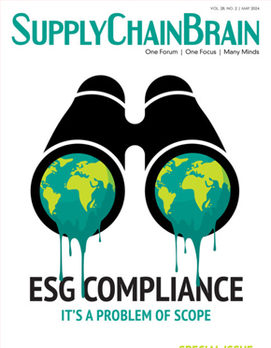
Advances in automotive technology aim to bring an end to the gasoline-powered internal combustion engine. Will the human driver be jettisoned along with it?
Electric vehicles (EVs) are well on their way to dominating the auto market. The Biden administration has set a target of zero-emission vehicles accounting for half of U.S. new car sales by 2030. And at least a quarter of global Fortune 500 companies have already signed on to that goal.
U.S. transportation policy views EVs as a plus in two distinct areas: the environment and social equity, according to attorney Melody Drummond Hansen, a member of the Automated & Connected Vehicle Group of O’Melveny & Myers LLP. “You’ll see a gold rush in the U.S. in the next several years,” she says, “as people take advantage of investments available at the federal and state level for infrastructure for EVs.”
Numerous policy mandates are pushing EVs forward. The recently adopted Infrastructure Investment and Jobs Act calls for establishment of standards this year for the construction and operation of vehicle charging stations, the inadequacy of which has served as a drag on EV purchases up to now. And certain states are taking even bolder steps: California Governor Gavin Newsom announced last year that all new cars and passenger trucks sold in the state must be zero-emission by 2035.
Similar and even greater progress toward EVs is occurring in other parts of the world, including China and countries in Europe. “We can’t afford to lose the race to them on these technologies,” Hansen says.
Barring any leaps in development of hydrogen-fueled vehicles in the next few years, the future of passenger cars and trucks is electric. But the near-term outlook for a parallel innovation — driverless vehicles — is less clear.
“Autonomous” cars can be seen on many American roads today, especially in cities, but they still require a human behind the wheel, ready to take control if necessary. Despite heavy investment in the technology by pioneers such as Tesla, Inc. and Waymo LLC (formerly Google’s self-driving car project), and similar initiatives underway at traditional automakers, the empty driver’s seat might be years in the future. Government investment in AV development is far less than in EVs, Hansen says.
That said, Hansen views EV and AV development as inextricably linked. “Many AVs are EVs,” she points out, and both electric and hydrogen fuel technology is at the base of most AVs. Tesla is just one of the automakers to be pursuing the two technologies in tandem.
Autonomous systems in automobiles today are more advanced than many people think, Hansen says, citing cruise control and various safety measures designed to avoid accidents. She sees automakers as taking “incremental steps” toward the eventual goal of fully self-driving vehicles.
It's not just a question of technological advancement, however; public perception of autonomous cars must change as well. To date, there has been only a handful of deaths occurring in supposedly self-driving cars, with manufacturers often blaming the human driver for failure to monitor and override the autopilot feature. Compare that with the reported 38,000 people who die each year on U.S. roadways in incidents involving human drivers. But even a single death caused by a machine is enough to sow doubt about technological progress.
As AVs inch toward a scenario of full deployment, their perceived role in over-the-road transportation is changing. The underlying reason is COVID-19. “One thing we saw in the pandemic was a shift away from the conversation about ride-sharing and personal cars, and more about the use of AVs for delivery,” Hansen says. The trend is in response to a surge in demand for goods purchased online, coupled with an understandable aversion to unnecessary human contact while the virus rages.
In the end, the timeline for full acceptance of driverless cars will depend on individual perception of, and tolerance for, risk. Hansen believes progress on that front will depend more on public engagement and education than the achievement of technological perfection. Partners for Automated Vehicle Education (PAVE) is a coalition of businesses, nonprofits and academics who seek to promote the benefits of AVs, especially in the areas of sustainability and safety. Success depends on its ability to combine facts with effective storytelling, Hansen believes.
“There’s an air of mistrust at the moment around technology,” she says. “How do you readjust for that — give people data informed by heart?”







